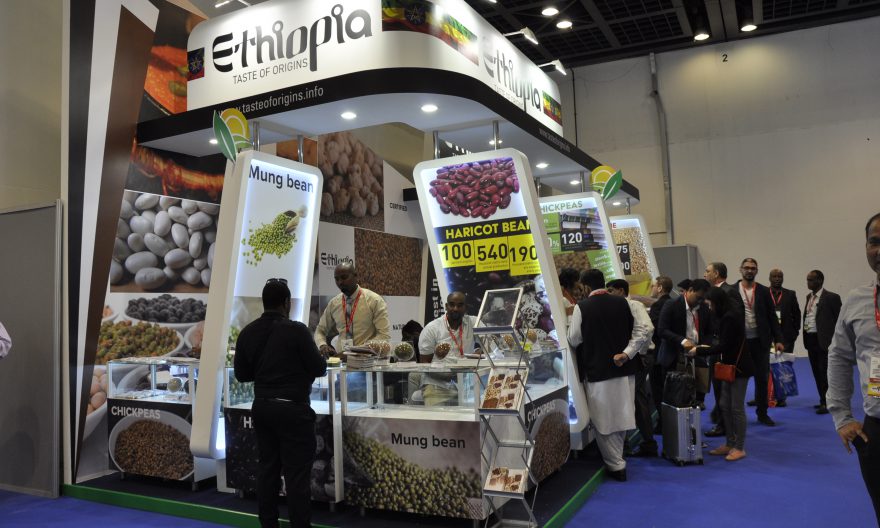
BY BACHA ZEWDIE
Ethiopia is relatively open to international trade, with a foreign trade-to-GDP ratio of 29 percent (World Bank, 2019). It has also a large domestic market of over 100 million people, making it the second-most populous country in Africa after Nigeria. Over the last decade, Ethiopia has had one of the fastest-growing economies in the world, with an average annual growth rate of 14 percent, according to the World Bank.
The business climate is undergoing significant changes with broad policy reforms implemented under the leadership of Prime Minister Abiy Ahmed. Government plans to privatize leading state-owned enterprises signal a significant shift toward market-based reforms and new flexibility with respect to economic policymaking.
The new leadership has a focused target to improve the country’s ease of doing business ranking and has formed an inter-ministerial committee led by the Prime Minister to improve specific areas of the ease of doing business.
The agriculture sector has historically been the engine of the Ethiopian economy, but it has recently given way to the expansion of the service sector. The National Bank of Ethiopia (NBE) notes agriculture, industry and services have contributed 33.3 percent, 28.1 percent, and 39.8 percent to GDP respectively during the 2018/19 Ethiopian fiscal year, as opposed to 36.3 percent, 27 percent and 39.2 percent to GDP in 2017/2018. The agriculture sector’s share of GDP shrank by more than 25 percent between 2005 and 2019, while the service sector’s share grew by 28 percent during the same period. Industry and the manufacturing sectors’ share gradually rose, expanding their share of GDP over the past ten years.
In 2018/2019, Ethiopia’s major goods exports included coffee 28.7 percent, oilseeds 14.5 percent, chat 11.4 percent, pulses 10.2 percent, cut flowers 9.6 percent, leather and leather products 4.4 percent and gold 1 percent.
Leading destinations for Ethiopia’s exports in 2018/2019 were: Asia 41.6 percent, Europe 25.4 percent and Africa 20.8 percent. In FY 2018/2019, the United States was Ethiopia’s leading export market representing 11.3 percent of total exports, registering a 2 percent increase from the previous year.
The Government of Ethiopia (GOE) has investment incentives aimed at attracting FDI, particularly export-oriented projects. U.S. companies that invest in Ethiopia benefit from tariff and duty-free incentives through Ethiopia’s eligibility for the African Growth & Opportunity Act (AGOA) trade preference program, now extended until 2025, and Ethiopia’s membership in the Africa Continental Free Trade Agreement (AfCFTA).
Prime Minister Abiy Ahmed (PhD) dwelt at length during his latest address to the House of Peoples Representatives (HPR)
The premier said that the export sector has been recording successive progress over the past three years amid Covid-19 and other hurdles. The sector has shown promising progress for the first time in the stated period.
Surprisingly, the exports sector has shown greater improvement in the wake of the Covid-19, drought, and locust’s which many countries have taken as a daunting factor for economic progress.
As to the Premier, different gold extracting companies were shut down ahead of the reform. However, through conducting intensive dialogue with stakeholders, the reform government has been addressing defies of various kinds through employing new procedures. In doing so, the country’s gold export performance is now more than double.
As per the information gained from the Ministry of Trade and Industry (MoTI) eight months report and 10 years perspective plan, Ethiopia’s export trade performance during the past eight months of the current fiscal year is promising when compared to the plan for the noted period and much greater than the past year’s same time.
To illustrate with numerical data, all together, it was planned to gain 2.55 Billion USD in the eight months of the fiscal year and the performance was 2.1 Billion USD or 82 percent of the plan which is 0.3 percent more than the past fiscal year’s same time that registered 1.81 Billion USD. This achievement exceeds the past year’s performance by 290 million USD or 16 percent.
Agricultural products take the lion’s share in the nation’s export trade plan aiming to gain 1.734 Billion USD followed by mining products which were intended to bring 423 Million USD. Their performance is nearer to the plan in which the agricultural products earned 1.391 Billion USD 80 percent of the plan and the mining products earned 410 Million USD 97 percent of the plan. According to these data, the mining sector has shown remarkable progress when compared to the previous years.
As the country is striving to transform its economic base from agricultural led to industry led, the manufacturing industry sector is given proper attention as a whole. Having in mind the reality of this ambition, the past eight months’ plan set for the sector was to earn 325 million USD taking into consideration the infancy of the country’s manufacturing industry sector. Its performance, however, is said to be satisfactory with 243 million USD earning which is 75 percent of the plan.
According to the information from MoTI, there are also best performing sectors during the aforementioned period when compared to the plan. These are oil seeds and Chat products with 125 percent and 111 percent best performance respectively.
On the other hand, there are some sectors that need special consideration since their performance is low though the nation’s potential in these areas place it among the leading countries in the world. These sectors include leather and leather products, living animals and meat products. Their performance is 51 percent, 66 percent and 67 percent respectively which is lower when compared with the plan set for the sector and performance of other sectors.
The impact of COVI-19 in particular and other problems such as illegal transaction and contraband negatively contributed for the lower performance of these sectors by interrupting their production and marketing process. This in turn, caused negative consequences on the workers daily lives by affecting their income.
Regarding the ten year’s perspective plan, the country is aspiring to accelerate its foreign currency earnings to 11.8 billion USD by 2030. The information from the Ministry indicates that this can be achieved by carrying out business negotiations; strengthening business relations; conducting market promotion and increasing the currently 34 major market destinations by two fold.
Among the major challenges that affect the export trade are illegal transaction and contraband. To curb these problems, the Ministry is working hand in glove with regions in an integrated manner and by forming a joint standing arrangement that carries out follow up on the export trade.
Besides, the Ministry is undertaking various actions that encourage the process of the export trade depending on the character of the sectors, the information from MoTI indicated.
Ethiopia promotes export commodities to major international trade shows through ATA and MoTI facilitation
The Ethiopian Herald 13 April 2021




